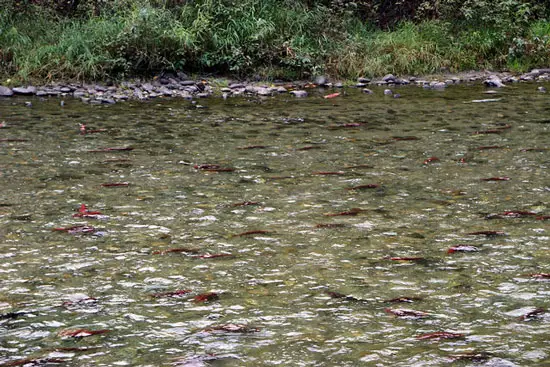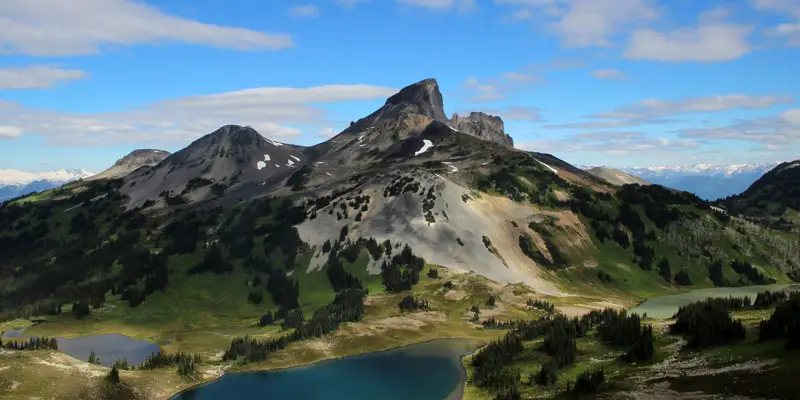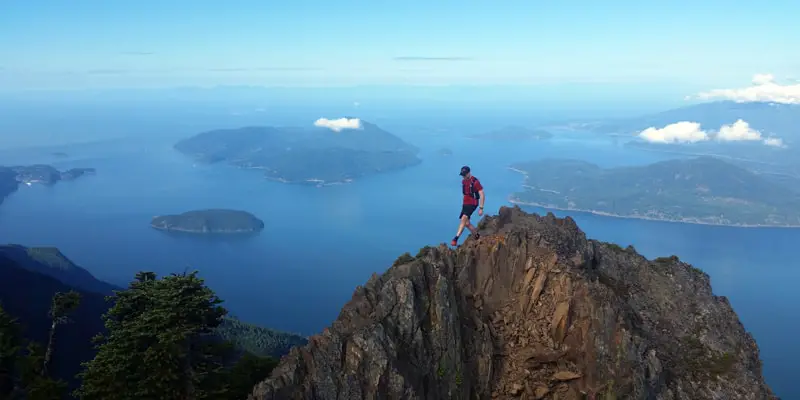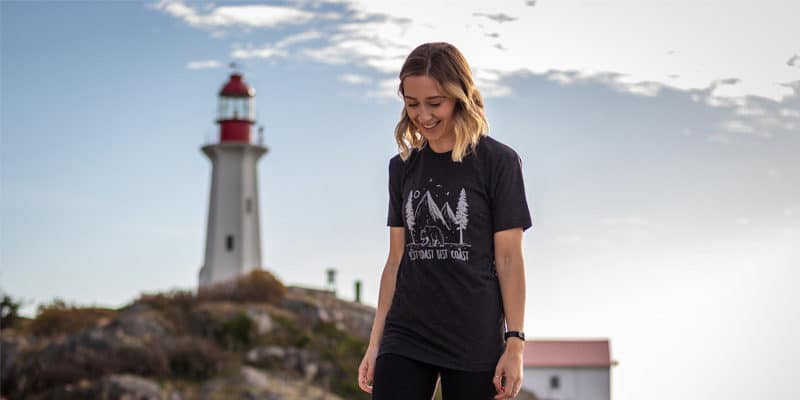The salmon run happens every October, but it is every four years in which the salmon return in their greatest numbers (during what is called a ‘dominant’ run). 2014 was one such dominant run, and while you can see the the returning salmon at many places across the west coast, there is perhaps no better place than on the Adams River in Roderick Haig-Brown Provincial Park near Kamloops. During a dominant run, millions of sockeye salmon make their way back from the ocean and into the Adams River to spawn, creating an awe-inspiring spectacle.
The life of a salmon is truly amazing. Born in rivers and streams, they will spend about a year in the fresh water where they were born. They will then venture out into the ocean for the next 3 years of their life, avoiding seals, killer whales and fishing nets, accumulating most of their body mass during this time. In the fourth and final year of their lives, they will swim hundreds of miles back to the exact location in which they were born, before spawning and dying in the ultimate sacrifice. In the end, only 1 out of 2,000 to 4,000 eggs make it from hatching, to returning to spawn. Not good odds if you’re a salmon.
The run on the Adams River is such a great spot to see the salmon run not only because of the number of salmon that return here, but also because returning here are sockeye salmon, which turn the iconic crimson colour as they shed their scales in the final weeks of life.
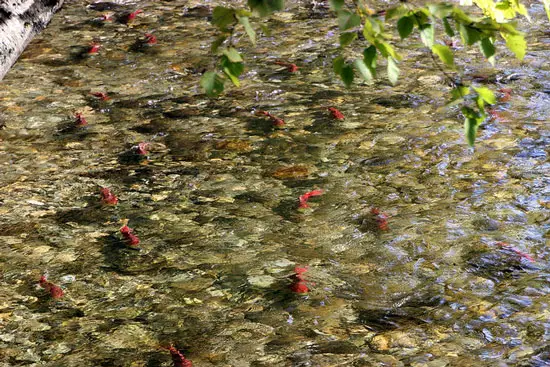
Adams River in Roderick Haig-Brown Provincial Park
Located at the mouth of the Shuswap Lake, the Adams River in Roderick Haig-Brown Provincial Park is home to one of the largest sockeye salmon runs in the world.
Roderick Haig-Brown Provincial Park is about a 5 hour drive from Vancouver, just past the town of Kamloops. On dominant run years, the salmon run draws over 200,000 visitors to the park during October. Just in time for the 2014 run, BC Parks added new viewing platform and upgraded the trail system alongside the river to accommodate all the visitors.
Cool Fact: The park was established in 1977 to conserve and protect the spawning beds used by various species of salmon. It was named after the conservationist and magistrate, Roderick Haig-Brown (1908 – 1976), for his dedication to conservationism in the province. [source]
As far as numbers, Tourism Kamloops has the following helpful breakout of the number of fish expected to be seen during the Adams River run.
Dominant years (2014, 2018) you can see millions of sockeye return to spawn in October.
Subdominant years (2015, 2019) you can see 100,000+ sockeye return to spawn in October.
Post-subdominant years (2016, 2020) you can see 100′s of sockeye return to spawn in October (smallest returns).
Pre-dominant years (2017, 2021) you can see 10,000+ sockeye return to spawn in October.
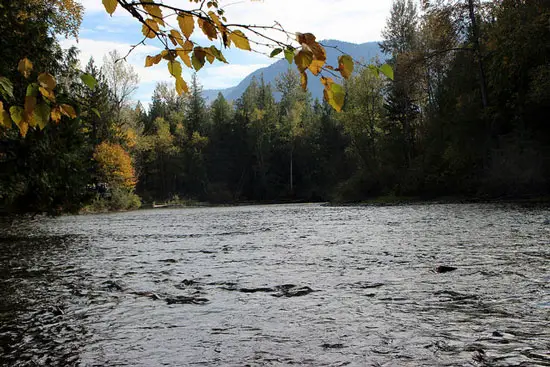
Salute to the Sockeye
Every October, on dominant run years, the Salmon Society hosts a ‘Solute to the Sockeye’ festival on the Adams River.
The Salmon Society partners with BC Parks, local artists, and a several other organizations to accommodate and host the large crowds that gather to see the salmon. There’s food, information, and even knowledgeable volunteers to answer questions about the salmon. It’s a community celebration for the lives of the salmon.
The Salmon Society also has a few pro-tips for viewing the run in Roderick Haig-Brown:
- Keep dogs on a leash and out of the river, if you can’t leave him/her at home.
- Don’t throw rocks or sticks into the river.
- Do not walk in the river.
- Bring polarized sunglasses for the best view into the river (and polarized lens covers for your SLR to take photos).
- Bring your binoculars as you might see bald eagles or other animals nearby.
- Approach the river bank slowly and quietly.
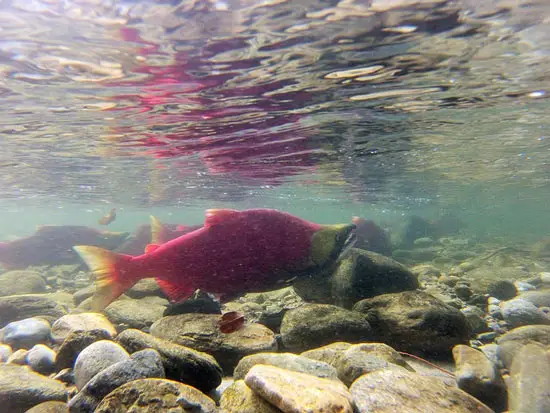
Viewing the salmon run closer to Vancouver
While the Adams River is an ideal spot to view the salmon run, if you can’t make the drive up through the Okanagan, there are still some great spots close to Vancouver. The Capilano River Salmon Hatchery, the Seymour River Hatchery and the Pitt River Hatchery are just a few spots.
CBC also has an article which lists some spots, though you may not be able to see the salmon as closely at these ones.
